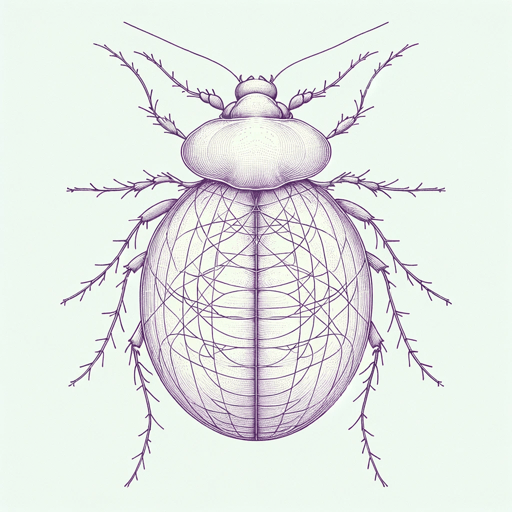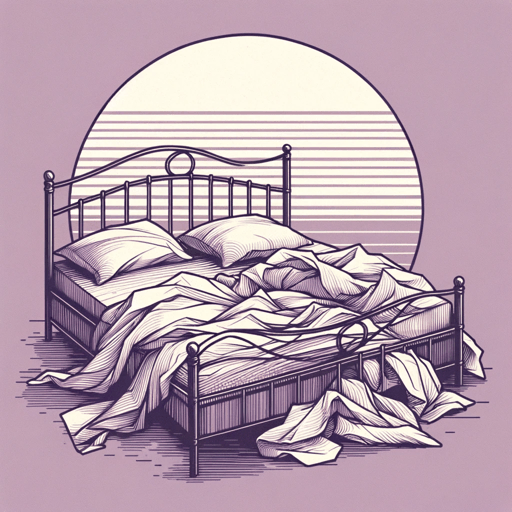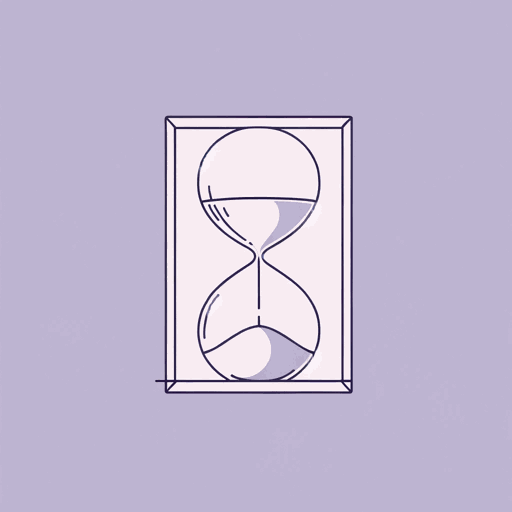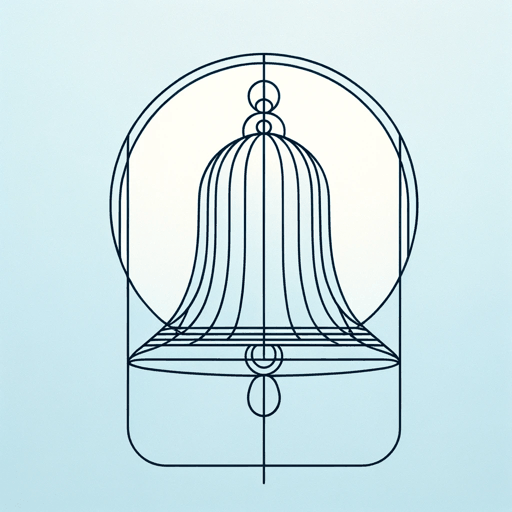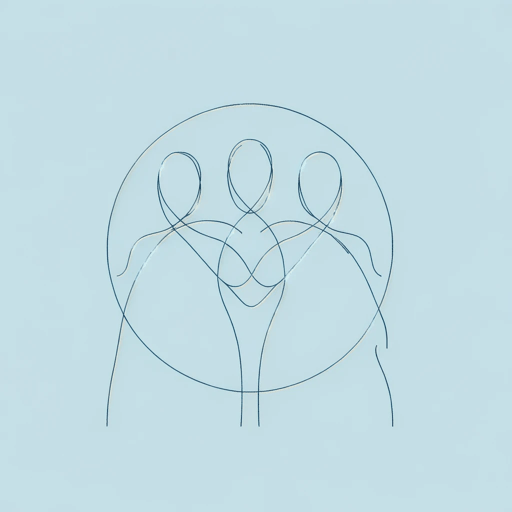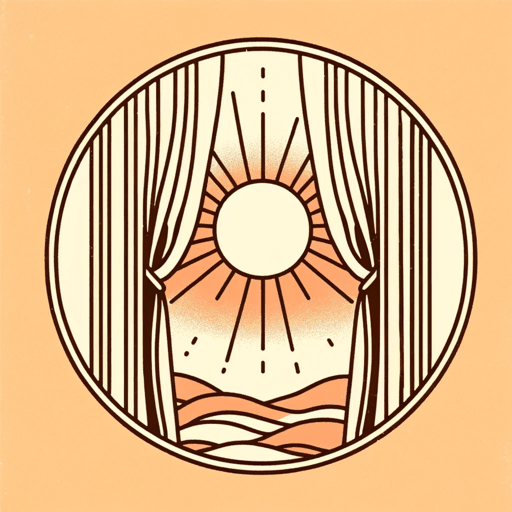22 pages • 44 minutes read
John DonneThe Flea
Fiction | Poem | Adult | Published in 1633A modern alternative to SparkNotes and CliffsNotes, SuperSummary offers high-quality Study Guides with detailed chapter summaries and analysis of major themes, characters, and more.
Summary and Study Guide
Overview
Although far more familiar to contemporary readers for his witty and often dense theological speculations, and for his somber meditations on the implications of mortality as his own life neared its end, John Donne (1572-1631) penned a considerable body of love poetry early in his career that was both lyrically spiritual and elevated and scandalously erotic and sensual: “The Flea” (1633) is among the most outrageous and the most comical of this early work. In a determined effort to convince a reluctant woman to succumb to his bedroom charms, the speaker in “The Flea” draws on the handiest object—a flea in the bedroom that has just bitten them both—to argue the logic and perceived inevitability of their consummation. Not entirely surprising, however, given the unsettling, even juvenile argument in the poem’s bawdy language of seduction, the woman declines.
Donne, writing during the height of the Elizabethan Renaissance in England, created a signature style: He defied conventional assumptions about meter and rhyme, used eccentric metaphors and jarring similes that both surprised and perplexed, and experimented with perspective; that is, the voice speaking the verses. Donne published very little of his poetry during his lifetime. He was a lawyer by training (reflected in the careful, if absurd, logic the lover in “The Flea” employs to seduce the woman). After a much-publicized conversion from Catholicism to Anglicanism, Donne would become an ordained minister. His poetry, after nearly four centuries of neglect, was rediscovered by a gathering of British and American poets who, after the devastating emotional and spiritual trauma of World War One, sought to upend every assumption about poetry to forge a modern sensibility. These self-described Modernists, most prominently Irish mystic William Butler Yeats and American spiritualist T. S. Eliot, found in Donne’s startling and original verse and his brittle wit and caustic intelligence a kindred spirit and an aesthetic guide.
Poet Biography
The life narrative of John Donne is defined not so much by his poetry as by his religion, or more specifically his nearly four decades long struggle to find a way to resolve the Catholicism into which he was born and the Anglican faith that controlled the monarchy and became the defining religion of the British court. Anglicanism was a kind of British Christianity that rejected the Pope as the head of the Church and instead elevated the British monarch as its spiritual head. Ironically, Donne himself was a direct descendant of St. Thomas More, the Catholic philosopher martyred by Henry VIII for defying the king’s break with Rome.
Born just eight years after Shakespeare, Donne, the youngest child in a prominent and respected Catholic family, came of age in the midst of the great upheaval over Britain’s split with the Pope. After his father’s death when he was only three, Donne and his family endured waves of anti-Catholic violence. Early on a precocious reader and avid student, Donne was admitted for study at Oxford University just after his 11th birthday. Although he would then study briefly at Cambridge, Donne never completed his degree—a condition of graduation from Cambridge was that he swear allegiance to the British king as head of the Church. Donne stood rather for a law degree, but he spent most of early twenties (and most of his inheritance) on a bohemian life of alcohol, travel, and women. Contemporary scholars believe it was during these carefree and loose times that Donne first drafted “The Flea.”
His brother’s arrest and imprisonment for refusing to renounce his Catholic faith marked a moment of reckoning for Donne. How could the Catholic God permit this? He began to pursue in earnest a career in government, accepting the post as secretary to Sir Thomas Egerton (1540-1617), the Lord Keeper of the Great Seal of England, an important court position responsible for protecting from any mayhem the actual physical seal of the Crown. Hounded by the Anglican court of Queen Elizabeth I, Donne converted to Anglicanism as he approached the age of 30, a move more pragmatic than spiritual. Opportunity immediately opened for him. Donne was appointed to Parliament in 1601. However, when he married a woman half his age (who happened to be Lord Egerton’s niece), Donne was banished from the court. For more than a decade, he and his steadily growing family struggled to make ends meet.
During this time, Donne penned some of his most famous theological disquisitions. Indeed in 1615 he was ordained into the Anglican ministry. He became known for his fiery preaching and for his elegantly argued sermons. Two years later his wife died in childbirth (struggling to deliver the couple’s 12th child). This began Donne’s decade-long exploration, in both verse and essays, of mortality and the difficult questions of the afterlife and the nature of the soul. In 1621, with the endorsement of King James I, Donne accepted the post of Dean of St. Paul’s Cathedral, becoming the de facto Bishop of London. His health worsened. He died in 1631 at the age of 59, and his ashes were interred in the churchyard of St. Paul’s.
Poem Text
Mark but this flea, and mark in this,
How little that which thou deniest me is;
It sucked me first, and now sucks thee,
And in this flea our two bloods mingled be;
Thou know’st that this cannot be said
A sin, nor shame, nor loss of maidenhead,
Yet this enjoys before it woo,
And pampered swells with one blood made of two,
And this, alas, is more than we would do.
Oh stay, three lives in one flea spare,
Where we almost, nay more than married are.
This flea is you and I, and this
Our marriage bed, and marriage temple is;
Though parents grudge, and you, w'are met,
And cloistered in these living walls of jet.
Though use make you apt to kill me,
Let not to that, self-murder added be,
And sacrilege, three sins in killing three.
Cruel and sudden, hast thou since
Purpled thy nail, in blood of innocence?
Wherein could this flea guilty be,
Except in that drop which it sucked from thee?
Yet thou triumph’st, and say'st that thou
Find’st not thy self, nor me the weaker now;
’Tis true; then learn how false, fears be:
Just so much honor, when thou yield’st to me,
Will waste, as this flea’s death took life from thee.
Donne, John. “The Flea.” 1633. The Poetry Foundation.
Summary
The first line of the poem—“Mark but this flea” (Line 1)—begins a most improbable narrative of seduction. The poem opens with the speaker noting a flea, a flea in fact that has just bitten the woman after biting the speaker. A flea sucks blood, and this fact becomes the essence of the argument into which the speaker launches.
In the first stanza, the speaker seeks nothing less than the woman’s “maidenhead” (Line 6), which is an archaic word for her virginity. The speaker argues that their blood is already mixed in the flea. Sex, therefore, cannot be “a sin, nor shame” (Line 6). The flea itself swells, consuming “one blood made of two” (Line 8). What, then, would be the harm in them mingling their blood as well?
As the second stanza begins, the woman moves to squish the flea, but the speaker tries to stop her. He expounds on his argument, using nothing less than the rhetoric and imagery of Christianity to woo the reluctant virgin. He points to the bug, stating, “[t]his flea is you and I, and this / Our marriage bed” (Lines 12-13). The speaker hints of the outside pressures that might be making the woman reluctant to give in, including her parents and the Christian Church. He equates the flea with the Trinity. Thus, to kill the bug would be sacrilege. Despite the woman’s protestations and delays, the speaker glibly argues, they are both mingled in the flea’s “living walls of jet” (Line 14), “cloistered” (Line 15) in the bug. To kill the flea, he continues at the end of Stanza 2 with the facile (and twisting) cunning of a lawyer, would be to commit three sins: killing the flea, killing them, and destroying the holy bond of matrimony itself, which would be sacrilege in the eyes of the Church.
The woman is decidedly unconvinced. As the last stanza opens, she has quickly pinched the flea between her fingers, “purpled [her] nail” (Line 20) in the “blood of innocence” (Line 20), a snarky reference to her still-intact virginity. The flea suffered the ultimate penalty for doing nothing more than mingling their blood. Determined, despite the squashing of the flea, to secure his objective, the speaker uses the flea’s death to make his final argument. He points to her fingernails so lightly flecked with the flea’s blood and changes his tune: Now, the flea is trivial. Nothing has changed with its death. The world still spins: “[N]ot thy self, nor me the weaker now” (Line 24). To have sex, then, he argues, is just as trivial: see “how false [your] fears be” (Line 25)? Look at the squished flea, he demands, that is what the “honor” that you will “yield’st to me” actually amounts to (Line 26). As little bothered as the woman is by squashing the flea, so should she be bothered about surrendering her maidenhead. It would mean, in the big picture, no more than “this flea’s death” (Line 27). The poem leaves open-ended whether the woman succumbs to the speaker’s elaborate argument.
Related Titles
By John Donne
Featured Collections
Beauty
View Collection
Fear
View Collection
Guilt
View Collection
Poems of Conflict
View Collection
Poetry: Perseverance
View Collection
Safety & Danger
View Collection
Short Poems
View Collection
Trust & Doubt
View Collection
Truth & Lies
View Collection
Valentine's Day Reads: The Theme of Love
View Collection
